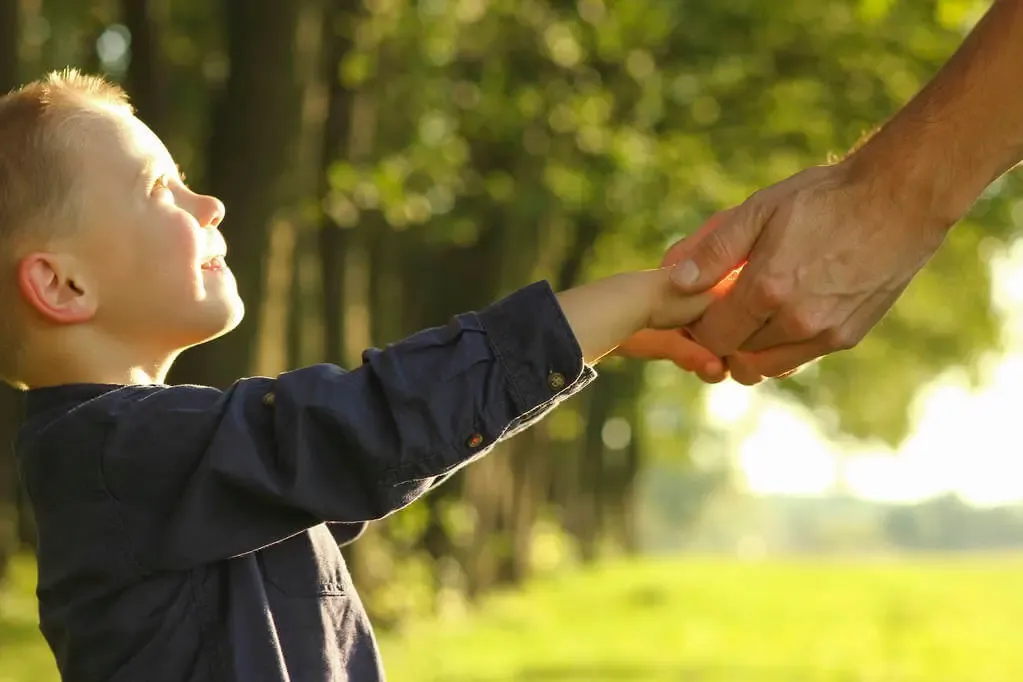Have you ever stopped to think about how incredibly comfy our lives have become? I mean, we’ve got memory foam mattresses, temperature-controlled homes, and food delivery apps that bring gourmet meals right to our doorstep. It’s like we’re living in a cocoon of coziness, shielded from any hint of discomfort. But here’s the kicker: could all this comfort be causing more harm than we realize? Welcome to the comfort crisis, where we dive into the depths of whether our penchant for comfort might actually be holding us back.
The Evolution of Comfort: From Necessity to Luxury
Our ancestors huddled around a flickering fire, battling the elements for survival. Comfort was a fleeting luxury, and even a moment’s respite from the cold was cherished. Fast forward to today, and we’re swimming in a sea of comfort. From ergonomic chairs that support our every contour to smartphones that cater to our every whim, our lives have become a treasure trove of plush living.
But, hold on a sec. With every leap we take into the realm of luxury, are we leaving behind the very essence of what made us strong and adaptable? It’s like trading in our hiking boots for a lifetime supply of slippers. Sure, those slippers feel amazing, but can they take us to new heights?

The Sneaky Downsides of Too Much Comfort
Let’s get real for a moment. Our newfound love affair with comfort has some unexpected side effects. Think about it: that plush recliner might feel like a slice of heaven, but it’s not doing our bodies any favors. Our ancestors might have been roughing it, but they were built to move, not melt into a sofa.
And don’t even get me started on the mental toll. When was the last time you faced a challenge that pushed you out of your Netflix-and-chill bubble? Our comfort cocoons often turn into echo chambers of predictability, shielding us from the kind of personal growth that comes from facing adversity head-on. I remember the time I reluctantly joined a public speaking class – my heart raced, my palms sweated, but guess what? I came out the other side stronger and way more confident.
Leap Out of That Cozy Comfort Zone
Let’s talk about comfort zones. You know, those magical realms where anxiety dares not tread. They’re like fluffy clouds of predictability, shielding us from the storm of uncertainty. But here’s the secret: growth doesn’t happen in comfort zones. It’s like a butterfly trying to stay snug in its cocoon – if it never breaks free, it’ll never experience the exhilarating dance of flight.
I recall a time when I decided to take up hiking. Now, I was no mountain goat, but the challenge of navigating those trails was invigorating. Sure, blisters happened, and there were a few wrong turns, but I felt more alive than ever. That’s the thing about discomfort – it’s the chisel that carves our character.

Tech: Friend or Foe of Comfort?
Ah, technology – the great comfort enabler. With a tap and a swipe, we can have almost anything delivered to our doorstep. Need groceries? There’s an app for that. Craving a fancy dinner? Another app to the rescue. But amidst all this convenience, are we sacrificing something bigger?
I remember a weekend when I decided to unplug. No screens, no notifications – just me and the world. And you know what? It felt like a breath of fresh air. We’re so caught up in the digital embrace that we forget the real world exists beyond the screen. Those face-to-face conversations, the rustle of leaves – they’re the stuff that makes us human.
Embracing Discomfort: A Love Story
Let’s flip the script. Instead of running away from discomfort, what if we embraced it like a long-lost friend? Remember that time you tried a new recipe and ended up with something that tasted like a rubber shoe? Okay, maybe that’s my story, but you get the drift. Embracing discomfort is like a canvas for creativity. It’s the thrill of the unknown, the exhilaration of learning something new.
I decided to take up a dance class. Me, with two left feet and the grace of a wobbly table. It was uncomfortable at first, but the laughter and the progress I made each week were worth every misstep. Embracing discomfort made me realize that growth is often found in the most unexpected places.

Society, Sustainability, and the Comfort Equation
Here’s a curveball: our love for comfort isn’t just affecting us; it’s impacting the planet too. The more comfort we demand, the more resources we gobble up. Our desire for convenience has given rise to a culture of excess. We’re drowning in possessions we don’t need, and the planet is paying the price.
I remember downsizing my belongings – from clothes I hadn’t worn in years to gadgets gathering dust. It felt liberating. Comfort, I realized, shouldn’t come at the cost of our planet’s well-being. It’s a delicate dance between personal contentment and the collective good.
Finding Harmony: Comfort and Growth Hand in Hand
So, where do we go from here? Are we doomed to a life of perpetual comfort or can we strike a balance? The truth is, comfort isn’t the enemy. It’s the excess of it that leads to the crisis. We can enjoy our cozy blankets and air-conditioned spaces while also embracing challenges that nudge us to evolve.
I look back at the comfort crisis as a wake-up call. A call to stretch, stumble, and grow. It’s about recognizing that comfort isn’t a destination; it’s a pit stop. So, let’s keep those slippers handy, but also lace up our hiking boots and step into the world with curiosity and courage.
Social and Cultural Factors: Navigating the Comfort Crisis Together
As we continue our expedition through the Comfort Crisis, it’s time to take a closer look at the social and cultural factors that influence our quest for comfort. These invisible threads shape the choices we make, the paths we take, and the very way we define “success” and “happiness.” So, grab your metaphorical compass as we navigate this intricate web of societal norms and cultural attitudes.
The Influence of Societal Norms on Comfort Pursuit
Ever noticed how societal norms have a way of quietly shaping our decisions? From a young age, we’re bombarded with messages that tell us a comfortable life is synonymous with a successful life. “Get a stable job, buy a big house, and you’ll be happy,” they say. It’s no wonder we often equate comfort with achievement.
But here’s the twist – this equation isn’t always accurate. Sure, comfort has its perks, but it’s not the sole indicator of a fulfilled life. The relentless pursuit of comfort might lead us to miss out on life’s vibrant hues – the messy, challenging, and beautifully unpredictable parts that contribute to our growth.
Cultural Attitudes: Embracing Struggle and Discomfort
Let’s jet off to different corners of the world for a moment. In some cultures, struggle and discomfort are celebrated as essential components of growth. Take Japan’s philosophy of “Kaizen,” which focuses on continuous improvement. Or consider the African proverb, “Smooth seas do not make skillful sailors.” These cultural perspectives emphasize that embracing discomfort is not only normal but necessary for personal development.
However, in certain cultures, the emphasis on comfort is stronger. The pursuit of financial stability and an easy life might take precedence over stepping into the unknown. Now, there’s nothing wrong with aiming for stability, but when comfort becomes a fortress that isolates us from challenges, it might just hinder our ability to adapt and thrive.

Shifting Perspectives on the Value of Discomfort
Times are changing, my friends. The Comfort Crisis is prompting a shift in how we view discomfort and challenge. People are beginning to recognize that comfort alone isn’t the ultimate destination. The stories of those who dared to venture beyond their comfort zones – entrepreneurs who risked everything, adventurers who explored uncharted lands – these tales are inspiring a generation to embrace discomfort as a necessary companion on the road to success.
In schools, educators are weaving discomfort into curricula, encouraging students to tackle problems that don’t come with straightforward solutions. In workplaces, employers are recognizing that a bit of discomfort can spark creativity and innovation. As a society, we’re starting to understand that true growth happens when we dare to venture beyond the borders of our comfort zones.
My Comfort Zone Culture Clash: A Personal Story
Let me share a cultural anecdote from my own life. Growing up in a culture that highly values stability, I was always encouraged to take the safe path – get a stable job, save for retirement, and avoid unnecessary risks. Comfort was the goal. But somewhere along the way, I realized that true fulfillment lay in the discomfort of pursuing my passions.
I took a leap and pursued a creative career, something that was considered unconventional in my cultural context. The initial discomfort was real, but so were the growth and satisfaction that followed. My journey taught me that challenging cultural norms can lead to discovering the limitless possibilities beyond our comfort zones.

Strategies for Balancing Comfort and Growth
We should strive for a life where comfort is not the enemy, but a trusted ally on our quest for personal development. It’s all about striking a balance – savoring the joys of cozy evenings in, while also stepping out to conquer new challenges. One powerful strategy is to set intentional goals that push us beyond our comfort zones.
Whether it’s learning a new skill, pursuing a passion project, or simply engaging in a conversation that makes us slightly uneasy, setting goals that invite discomfort can lead to remarkable growth. Remember, discomfort is not an enemy to be defeated; it’s a signpost that we’re on the right track toward progress.
Physical Activity and Mental Stimulation: Finding the Sweet Spot
In the age of smart devices and remote controls, our physical and mental well-being might take a back seat. But it’s time to flip the script. Engaging in regular physical activity not only keeps us healthy but also teaches us the art of pushing through discomfort. That moment when you power through that last rep at the gym? That’s growth in action.
Equally important is mental stimulation. Challenge your mind with puzzles, books that challenge your perspective, or discussions that make you rethink your stance. This mental stretching might feel uncomfortable at times, but it’s in those discomforting moments that new neural connections are forged.

Having Me Time in Nature: How It Can Help You Rediscover Yourself and Break Out of Your Comfort Zone
Picture yourself as a solo adventurer in the heart of nature, just you and the great outdoors. It’s like a secret rendezvous with yourself, a chance to peel back the layers and rediscover who you truly are. And guess what? It’s not just about escaping the hustle and bustle; it’s about taking a leap beyond your cozy cocoon and diving headfirst into the unknown. This is your chance to rewrite the story, to embrace the unfamiliar, and to show your comfort zone who’s boss. So, are you ready to trade the ordinary for the extraordinary and embark on a journey of self-discovery amidst the wonders of nature?
Education and Professional Growth: Embracing the Unfamiliar
Now, let’s shine a spotlight on education and the workplace. As students, embracing unfamiliar subjects and taking on assignments that stretch our abilities can lead to a well-rounded education. And in the professional realm, seeking out opportunities that make us uncomfortable – presenting to a larger audience, taking on leadership roles – can lead to career growth that defies the Comfort Crisis.
Let’s not forget the power of collaboration. Surrounding ourselves with individuals who encourage us to step out of our comfort zones can be a game-changer. Whether it’s a mentor who challenges our assumptions or a supportive friend who nudges us toward the unknown, their influence can help us break free from the confines of our cozy comfort zones.

A Comfort-Resilience Mindset: Redefining Success
As we wrap up our exploration of strategies, it’s essential to redefine our perspective on success. The Comfort Crisis has shown us that true success isn’t confined to material comfort alone. Success lies in our ability to adapt, innovate, and face challenges head-on.
So, let’s shift the conversation around success – from measuring it solely in terms of possessions and creature comforts to valuing resilience, growth, and the courage to embrace discomfort. When we make this shift, we’re not only redefining success for ourselves but also contributing to a culture that thrives on the magic of discomfort.
A New Horizon: A Comfort-Resilience Balance
As we bid adieu to our exploration of the Comfort Crisis, let’s carry forward the wisdom we’ve gained. Comfort is wonderful – it brings joy, ease, and moments of reprieve. But when we let it become a barrier to growth, it transforms into a crisis.
By striking a balance between comfort and discomfort, by intentionally seeking growth and embracing challenges, we can transcend the limitations of the Comfort Crisis. Let’s forge a new horizon where comfort and resilience coexist harmoniously, where the pursuit of growth becomes as natural as seeking out comfort. And with that, my fellow adventurers, let’s march forward, ready to embrace discomfort, conquer challenges, and lead lives that are as fulfilling as they are comfortable. Until we meet again on this journey of exploration, stay curious and keep thriving!
Parenting and the Comfort Crisis: Nurturing Resilience in the Next Generation
As our journey nears its end, we’re about to delve into a realm that has far-reaching implications – parenting in an era defined by unparalleled comfort. How do we raise resilient, adaptable children in a world where comfort reigns supreme?

Effects of Overprotective Parenting on Child Development
A child bundled in layers of protective gear, guarded against every conceivable discomfort; sound familiar? Overprotective parenting, driven by the well-meaning desire to shield children from discomfort, might actually be doing more harm than good. By shielding them from every fall, disappointment, or challenge, we inadvertently hinder their ability to develop resilience and problem-solving skills.
Think back to your own childhood – the scraped knees, the daring adventures, the times you picked yourself up after a fall. Those moments weren’t just about physical growth; they were building blocks of emotional and mental resilience. By overprotecting, we risk robbing our children of the very experiences that shape their ability to face the world with confidence.
Nurturing Resilience and Independence
Now, let’s shift our perspective. Imagine a child navigating a climbing frame, taking calculated risks, and experiencing the thrill of conquering a challenge. These experiences foster a sense of independence and confidence that comfort alone can’t provide.
Nurturing resilience means allowing our children to stumble and make mistakes. It means letting them face manageable challenges that encourage problem-solving and critical thinking. It’s about showing them that discomfort is not an enemy, but a companion on the journey to growth.
Creating a Supportive Discomfort Environment
I’ll let you in on a little secret – discomfort doesn’t have to be isolating or daunting. As parents, we have the power to create an environment where discomfort is seen as a natural part of growth. It’s about fostering open conversations about challenges, failures, and the beauty of trying again.
Think of it as a discomfort support system. Encourage your child to share their discomforts, whether it’s a tricky math problem or a social hurdle. Help them see that they’re not alone in their journey, that discomfort is something everyone encounters. By doing so, you’re nurturing their emotional well-being while imparting the vital life skill of navigating discomfort.

My Parenting Paradigm Shift: Embracing Uncomfortable Moments
As a parent, I’ve had my fair share of moments where I’ve grappled with the Comfort Crisis. I used to rush to solve every problem my child encountered, thinking I was shielding them from pain. But a pivotal moment made me rethink my approach.
One day, my child came to me after a challenging day at school. Instead of jumping in with solutions, I listened. I empathized. And together, we explored strategies to tackle the discomfort. It was a paradigm shift – from fixing to facilitating growth. This experience taught me that fostering resilience is about being a guide, not a shield.
The Future: A Comfort-Resilience Balance
As we conclude our exploration of parenting in the Comfort Crisis, let’s envision a future where children are equipped to navigate life’s challenges with grace and confidence. A future where parents strike a delicate balance between providing comfort and nurturing resilience.
By allowing our children to experience discomfort in controlled and supportive ways, we’re sowing the seeds of resilience that will serve them well throughout their lives. The Comfort Crisis need not be a barrier; it can be a gateway to raising a generation that’s ready to embrace discomfort, pursue growth, and thrive in a world that’s both comfortable and challenging.
So, let’s rewrite the parenting narrative. Let’s inspire our children to step out of their comfort zones, to face the unknown with curiosity and courage. Together, we can create a new chapter in the Comfort Crisis saga – one where the next generation emerges as champions of resilience, prepared to conquer whatever challenges lie ahead.





